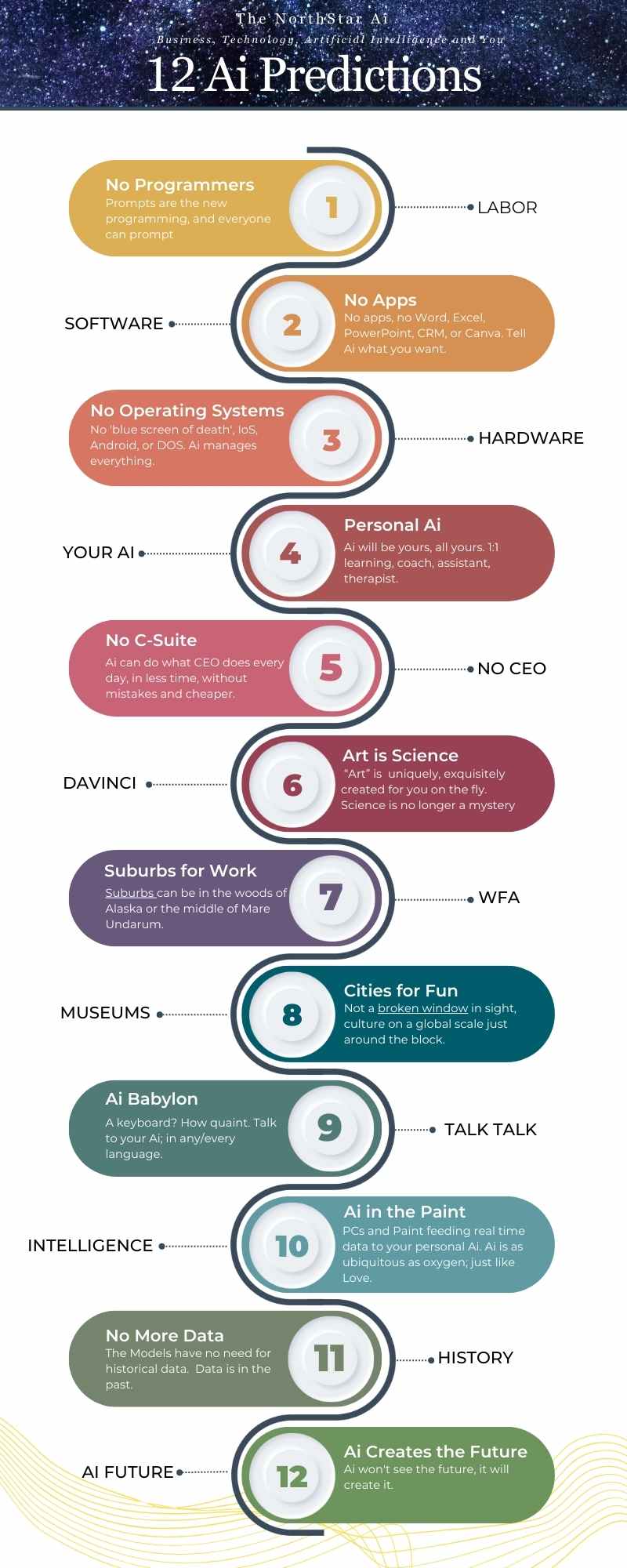|
by Greg Walters & Jeremy Stone
Greg's Words
From the report cited in the article, "People do want structure, and people like boundaries,” former Slack CEO Stewart Butterfield told Fortune editor-in-chief Alyson Shontell last year. “But they don’t like to be told what to do, so I think the secret is to not make them feel like their autonomy is being denied or that their ideas aren’t important, while still giving some structure.” - in a word, LIE. This too, "Over half (54%) of managers told Envoy they’ve had to forgo making a critical decision about the workplace because they lacked the requisite data to support it. Without that data, nearly a quarter of them admit to making decisions based on “gut instinct,” which naturally leads to resentment and disappointment. Fifty-seven percent of bosses said if they had better access to data, they could better measure the success of their in-office policies." The 'cover your ass' philosophy for all to see. AI and the Fear of Covid will go down as the beginning of the end for 200 year old business structures, hierarchies and the physical office, because the fallacies of corporate employment are exposed as empty. No gold watch. No job security. One-way loyalty. From watercoolers to webcams: The workplace waltz continues
This is a watershed moment of innovation of how work gets done...but we’re still talking about the f–king watercooler.” - Annie Dean, Atlassian The return-to-office (RTO) debate has unveiled a significant gap between employee desires and managerial decisions. At the heart of this debate lies the concept of autonomy. As Stewart Butterfield, former Slack CEO, aptly put it, while people appreciate structure, they detest being dictated to.
Envoy's survey of over 1,000 U.S.-based executives and managers reveals a startling disconnect. A whopping 80% confessed that with a better understanding of employee preferences, their RTO strategies would differ. This lack of alignment often stems from the absence of concrete workplace data, pushing many to rely on mere instincts. Such decisions, devoid of data, can lead to workplace resentment. This is a watershed moment of innovation of how work gets done...but we’re still talking about the f–king watercooler.” - Annie Dean, Atlassian Transitioning to Real-World Scenarios: As we delve deeper into the intricacies of the RTO debate, it becomes evident that companies, both large and small, are grappling with these challenges in real-time. Their approaches to RTO, influenced by a myriad of factors from industry norms to company culture, offer a glimpse into the broader landscape of this ongoing debate.
Let's explore some notable examples to understand the spectrum of strategies and the ensuing employee reactions:
The crux of the issue, as highlighted by Envoy's data, is a fundamental mismatch. While managers prefer having their teams within arm's reach, employees are clamoring for greater flexibility. The benefits of remote work, from increased savings to enhanced work-life balance, are undeniable. Yet, the push for a mandated office return persists.
It’s time to disagree and commit. We’re here, we’re back—it’s working,” Mike Hopkins, senior vice president of Prime Video and Amazon Studios, reportedly said of in-person work. “I don’t have data to back it up, but I know it’s better.”
Jeremy StoneLearned Academic unleashed into the real world Source, research and inspiration.
Basic Information
Summary: The modern workplace is at a crossroads, with employees yearning for autonomy and managers grappling with return-to-office (RTO) decisions. Former Slack CEO Stewart Butterfield emphasizes the importance of not compromising employee autonomy while providing structure.
A significant revelation from workplace software firm Envoy indicates that 80% of bosses would have approached RTO differently had they understood employee preferences. This disconnect stems from a lack of access to workplace data, leading many to rely on gut instinct. Companies like Amazon have made decisions based on leadership feelings rather than hard data. The challenge is further compounded for companies operating on an ad hoc basis, making it tough to gauge efficiency. Envoy's data highlights a mismatch: bosses prefer visible employees, while employees seek flexibility. Despite the proven productivity dip with remote work, employees still favor it, valuing the flexibility it offers. The debate continues, with some companies mandating office returns. However, the key lies in understanding that the challenges are about "how-to-work" and not "where-to-work," as stated by Atlassian’s Annie Dean. Tweet: "The modern workplace dilemma: Balancing autonomy with structure. As the RTO debate rages on, it's clear that understanding employee preferences and making data-driven decisions are key. #FutureOfWork #RTODebate" LinkedIn Introduction: As the debate around returning to the office intensifies, it's crucial for leaders to understand the nuances of employee preferences and the importance of data-driven decision-making. Dive into our latest article to explore the challenges and potential solutions in the modern workplace. Keyword List: autonomy, return to office, RTO, workplace data, employee preferences, hybrid work, remote work, workplace efficiency, workplace managers, productivity, innovation, creativity. Ideal Image Description: A split image showcasing one side with a vibrant, collaborative office environment and the other side depicting a serene home office setup, symbolizing the ongoing debate between office and remote work. Search Question: How are companies adapting to employee preferences in the return-to-office debate? SEO-based Title: "The Return-to-Office Dilemma: Balancing Autonomy, Data, and Employee Preferences" SEO-based description: Exploring the Return-to-Office Debate: Dive into the complexities of the modern workplace as we analyze the tug-of-war between corporate mandates and employee desires for autonomy. Drawing from real-world examples, this article sheds light on the challenges and potential solutions in the evolving landscape of work. Discover insights from industry leaders and understand the pivotal role of data-driven decision-making in shaping the future of work. Funny Tagline: "From watercoolers to webcams: The workplace waltz continues!" Song Suggestion: "Last Train to London", ELO. Much like the urgency depicted in Electric Light Orchestra's "The Last Train to London," companies today are at a pivotal juncture. The song captures the essence of a fleeting moment, a last chance to make a decision. Similarly, businesses are on the cusp of making transformative decisions about the future of work. Just as the song's protagonist rushes to catch the last train, companies must act swiftly, yet thoughtfully, to address the evolving needs and preferences of their workforce. The track serves as a poignant reminder that time is of the essence, and the decisions made now will shape the workplace landscape for years to come.
0 Comments
Your comment will be posted after it is approved.
Leave a Reply. |
Topics & Writers
All
AuthorsGreg Walters Archives
July 2024
|


